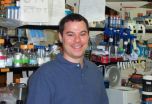(Press-News.org) A UCLA-led has study found that after leaving the hospital, nearly two-thirds of Medicare beneficiaries hospitalized for acute ischemic stroke either died or were rehospitalized within a year.
The findings point to an opportunity for more quality-of-care initiatives to improve stroke care, especially in transitioning to home, stroke rehabilitation and outpatient care.
The study, which appears online Dec. 16 in Stroke, a journal of the American Heart Association, also found that hospital mortality and readmission rates varied widely nationwide, indicating there may be substantial opportunities to improve stroke care and reduce variations in clinical outcomes, the researchers said.
"The findings show that ischemic stroke patients may be at substantial risk once leaving the hospital," said Dr. Gregg C. Fonarow, the study's first author and associate chief of the division of cardiology at the David Geffen School of Medicine at UCLA. "This is one of the first studies to take a look at mortality and rehospitalization rates for Medicare stroke patients across the country, and the findings are quite alarming."
An academic team analyzed data on outcomes for more than 90,000 Medicare patients admitted between 2003 and 2006 to 625 hospitals participating in the Get With the Guidelines–Stroke Program, a national registry for stroke hospitalizations.
All the patients had fee-for-service Medicare insurance. The average patient was 79 years old, 58 percent were female and 82 percent were white. Patients were hospitalized for the most common type of stroke — an acute ischemic event, which occurs due to an obstruction within a blood vessel that supplies blood to the brain.
The team found that the total unadjusted in-patient hospital mortality rate was 6.1 percent, the mortality rate 30 days after hospital admission was 14.1 percent and the mortality rate one-year from admission was 31.1 percent.
Within the first year after hospital discharge among stroke patients who survived and were released from the hospital, the death rate was 26.7 percent, and the readmission rate was 56.2 percent. The overall rate of death or readmission was 61.9 percent.
"We need to better understand the patterns and causes of mortality and readmission after acute stroke to help avoid the hospitalizations and deaths that are preventable," said Fonarow, UCLA's Eliot Corday Professor of Cardiovascular Medicine and Science and director of the Ahmanson–UCLA Cardiomyopathy Center.
In addition, the study found wide variations between hospitals for both 30-day mortality rates and readmission rates after hospital discharge. The average 30-day unadjusted rate of death or readmission after hospital discharge was 21.4 percent, with the best hospitals performing at 14.4 percent and worst at 28.6 percent.
"There is a two-fold difference between the best and worst performing hospitals," Fonarow said. "We may be able to standardize treatment programs to help close this gap."
Even when risk-adjusting for hospital differences such as bed size; the region of the country; the type of facility, such as an academic or community hospital; and whether or not the hospital had a Joint Commission primary stroke center designation, there was very little difference in outcomes. Academic hospitals and those in the Northeast and West had just slightly more favorable outcomes.
Researchers also found that there were no improvements in mortality or rehospitalization rates in this population for the entire time period studied, 2003 to 2006.
Fonarow noted that the rates may even be conservative, given that the participating hospitals were already part of an in-hospital quality-improvement program for stroke.
The study also highlighted clinical variables that may provide target areas for improvement. Many of the hospital readmissions were for non-cardiovascular conditions like pneumonia, so additional prevention protocols in these areas may be helpful.
Numerous patients arrived at the hospital by private transport, which reinforces the importance for further patient and public education about calling 911 immediately if stroke is suspected, since time is critical for effective treatment.
The researchers noted that these results were only for fee-for-service Medicare beneficiaries. The clinical outcomes for younger stroke patients and those with other types of insurance may be different.
Further studies will take a closer look at in-hospital and out-patient factors that may influence stroke care.
INFORMATION:
The study was funded by Get With the Guidelines (GWTG), an American Heart Association/American Stroke Association program. The GWTG program is also supported in part by unrestricted educational grants to the American Heart Association by Pfizer Inc., the Merck–Schering Plough Partnership and the Pharmaceutical Roundtable. Additional disclosures are listed in the full study.
Other authors include Dr. Eric E. Smith, department of clinical neurosciences, University of Calgary; Mathew J. Reeves, department of epidemiology, Michigan State University; Wenqin Pan, DaiWai Olson, Dr. Adrian F. Hernandez and Dr. Eric D. Peterson, Duke Clinical Research Center; and Dr. Lee H. Schwamm, division of neurology, Massachusetts General Hospital.
For more news, visit the UCLA Newsroom and follow us on Twitter.
Most Medicare stroke patients die or are rehospitalized within year after discharge
Study shows significant variation in outcomes among nation's hospitals
2010-12-17
ELSE PRESS RELEASES FROM THIS DATE:
Mount Sinai researchers develop mouse model to help find how a gene mutation leads to autism
2010-12-17
Researchers from Mount Sinai School of Medicine have found that when one copy of the SHANK3 gene in mice is missing, nerve cells do not effectively communicate and do not show cellular properties associated with normal learning. This discovery may explain how mutations affecting SHANK3 may lead to autism spectrum disorders (ASDs). The research is currently published in Molecular Autism.
"We know that SHANK3 mutation plays a central, causative role in some forms of autism spectrum disorders, but wanted to learn more about how it does this," said Joseph Buxbaum, PhD, Director ...
Tools used to decipher 'histone code' may be faulty
2010-12-17
CHAPEL HILL, N.C. – The function of histones -- the proteins that enable yards of DNA to be crammed into a single cell -- depends on a number of chemical tags adorning their exterior. This sophisticated chemical syntax for packaging DNA into tight little coils or unraveling it again -- called the "histone code" -- is the latest frontier for researchers bent on understanding how genetics encodes life.
But recent research from the University of North Carolina at Chapel Hill has found a number of issues with histone antibodies, the main tools used to decipher this code, ...
A 'spin ratchet': A new electronic structure for generating spin current
2010-12-17
A research team from the Institut Català de Nanotecnologia (ICN), in Barcelona, has demonstrated a device that induces electron spin motion without net electric currents, a key step in developing the spin computers of the future. The results are published in the Dec 17 issue of the journal Science. The authors are Marius V. Costache and Sergio O. Valenzuela, an ICREA Professor who is leader of the Physics and Engineering of Nanodevices Group at ICN.
Spintronics is a branch of electronics that aims to use the electron spin rather than its charge to transport and store ...
Better spaces for older people
2010-12-17
The research project 'Older People's Use of Unfamiliar Space' (OPUS) examined the strategies used by older people to find their way in unfamiliar spaces as pedestrians and users of public transport. As part of the research, older people were shown town scenes and pedestrian routes and gave feedback on signposting, ease of navigation and general impressions. Their heart rates were measured to monitor stress levels. Participants were also taken to a town centre to walk through the same routes in person.
Initial findings show:
Signs are of limited use even in unfamiliar ...
Genome code cracked for most common form of pediatric brain cancer
2010-12-17
Scientists at the Johns Hopkins Kimmel Cancer Center have deciphered the genetic code for medulloblastoma, the most common pediatric brain cancer and a leading killer of children with cancer. The genetic "map" is believed to be the first reported of a pediatric cancer genome and is published online in the December 16 issue of Science Express.
Notably, the findings show that children with medulloblastoma have five- to tenfold fewer cancer-linked alterations in their genomes compared with their adult counterparts, the scientists say.
"These analyses clearly show that ...
CHOP experts collaborate in gene survey of childhood brain cancer; intriguing clues found
2010-12-17
Pediatric cancer researchers at The Children's Hospital of Philadelphia contributed important expertise to a new landmark study of medulloblastoma, a type of brain tumor typically found in children. The large multicenter study defines the genetic landscape of this cancer, and holds intriguing clues to gene changes on signaling pathways that may become fruitful targets for future therapies.
The most common cancerous brain tumor in children, medulloblastoma is, fortunately, rare. However, it causes significant mortality, and survivors may suffer serious long-term side effects ...
Iowa State, Ames Lab physicist developing, improving designer optical materials
2010-12-17
AMES, Iowa – Advancements in fabrication technologies may lead to superlenses and other designer optical materials, according to an Iowa State University and Ames Laboratory physicist.
In an article titled "Improving Metamaterials" published in the Perspectives section of the Dec. 17 issue of the journal Science, Costas Soukoulis and Martin Wegener write about the man-made materials designed to deliver certain properties not found in nature.
Soukoulis is an Iowa State University Distinguished Professor and Frances M. Craig Professor of Physics and Astronomy and a senior ...
Liver cancer in cirrhotic patients effectively treated with radiofrequency ablation
2010-12-17
Researchers from Italy determined that radiofrequency ablation (RFA) is a safe and effective therapy for managing hepatocellular carcinoma (HCC) in cirrhotic patients. The high repeatability of RFA is advantageous in controlling recurrences of cancerous tumors in the liver. Results of this 10-year retrospective study are available in the January 2011 issue of Hepatology, a journal published by Wiley-Blackwell on behalf of the American Association for the Study of Liver Diseases (AASLD).
HCC is the third leading cause of death from cancer worldwide and according to the ...
Scientists discover powerful biomarker panel for the early detection of breast cancer
2010-12-17
In the war on cancer, perhaps there is nothing more powerful in a physician's arsenal than early detection. Despite recent advances in early detection and treatment, breast cancer remains a common and significant health problem in the United States and worldwide. Approximately one in ten women will get breast cancer in their lifetime and more than half of women with late stage cancer (II and III) have no cure or effective therapeutic available.
Using a new, powerful method for rapidly screening molecules associated with disease, proteomics expert Joshua LaBaer and colleagues ...
Study shows garlic could protect against hip osteoarthritis
2010-12-17
Researchers at King's College London and the University of East Anglia have discovered that women who consume a diet high in allium vegetables, such as garlic, onions and leeks, have lower levels of hip osteoarthritis.
The findings, published in the BMC Musculoskeletal Disorders journal, not only highlight the possible effects of diet in protecting against osteoarthritis, but also show the potential for using compounds found in garlic to develop treatments for the condition.
A relationship between body weight and osteoarthritis was previously recognised, although it ...
LAST 30 PRESS RELEASES:
Researchers use robotics to find potential new antibiotic among hundreds of metal complexes
Gut bacteria changes at the earliest stages of inflammatory bowel disease
Scientists develop new way to “listen in” on the brain’s hidden language
Brain research: “Pulse generators” grow and shrink as memories are formed
For teens, any cannabis use may have impact on emotional health, academic performance
School meals could unlock major gains for human and planetary health
Menopause hormone therapy does not appear to impact dementia risk
Signature patterns of brain activity may help predict recovery from traumatic brain injury
Dresden study uncovers new key mechanism in cancer cells
New species are now being discovered faster than ever before, study suggests
Cannabis-based products show limited short-term benefit for chronic pain, with increased risk of adverse effects
Cannabis products with more THC slightly reduce pain but cause more side effects
Clearing the brain of aging cells could aid epilepsy and reduce seizures
Brain injuries linked with potential risk of suicide, new study finds
New technique lights up where drugs go in the body, cell by cell
New study finds movement of fishing fleets can reveal shifts in marine ecosystems
Embargoed: New evidence points to potential treatment for vascular dementia
Study uncovers disrupted brain balance in alcohol dependence
Working in groups can help Republicans and Democrats agree on controversial content moderation online
Structural findings reveal how distinct GPCR ligands create different levels of activation
Anything-goes “anyons” may be at the root of surprising quantum experiments
UC review: Maximizing workplace opportunity for veterans
From generation to complex control: Metasurfaces make perfect vortex beams "within reach"
Thin-film lithium niobate-based detector: recent advances and perspectives
Exploring why some people may tend to persistently make bad choices
How cells balance their protein levels
Nirsevimab vs RSVpreF vaccine for RSV–related hospitalization in newborns
Effectiveness and impact of maternal RSV immunization and nirsevimab on medically attended RSV in US children
AI gives scientists a boost, but at the cost of too many mediocre papers
Next-generation vision model maps tree growth at sub-meter precision
[Press-News.org] Most Medicare stroke patients die or are rehospitalized within year after dischargeStudy shows significant variation in outcomes among nation's hospitals


